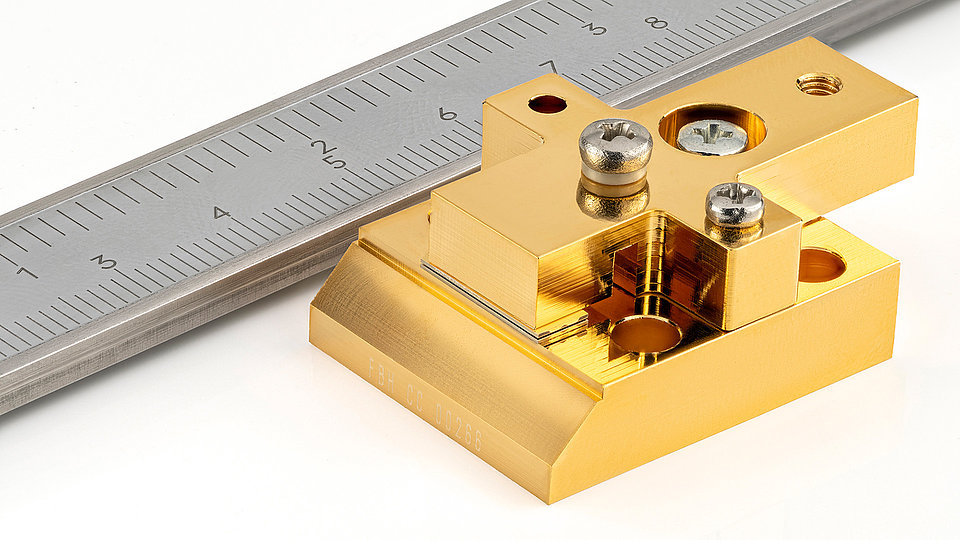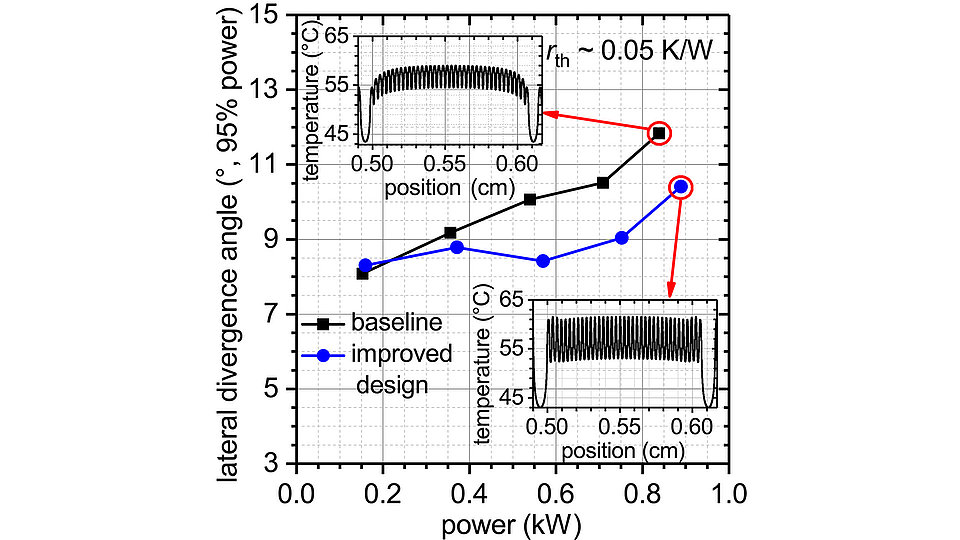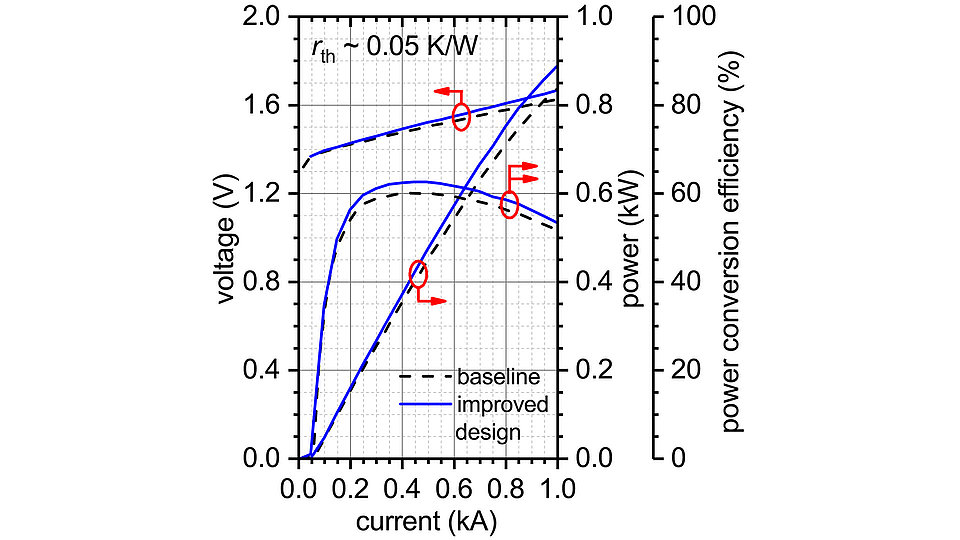Precision engineering of the thermal profile in high-power broad-area lasers: an innovative approach for brightness scaling
Fig. 1: A fully packaged kW-class 1-cm bar with improved lateral beam divergence and power conversion efficiency.
Fig. 2: Simulated thermal profile (insets) and measured lateral far field angles (95% power) for a 940 nm kilowatt diode laser bar with broad-area emitters with traditional structure (square) and an improved structure (circle) at rth ~ 0.05 K/W thermal resistance.
Efficient GaAs-based high-power broad-area (BA) diode lasers are nowadays a crucial component for many applications such as in medicine, automotive, material processing etc. Moreover, they are expected to play a large role in numerous emerging future applications including generation of energy by laser-induced fusion. In many of these cases, a high beam quality, i.e., narrow beam divergence, in addition to high power is essential to increase the brightness (power density) and thus to reduce process time and system complexity. FBH researchers have recently worked to identify limits to brightness in diode lasers and have developed innovative ways to address them.
In one important effort, research focused on flattening the thermal profile generated within the emitters that adversely affect the beam quality. During laser operation, a significant portion of the supplied power is converted into thermal energy and heats up the device. The increase in refractive index of semiconductor layer with rising temperature generates the so-called thermal lens within the emitter. This thermal lens raises the number of guided modes and the beam divergence angle. As the operating power rises, the thermal lens becomes even stronger, further increasing the beam divergence angle.
The FBH scientists, in cooperation with TRUMPF Laser GmbH, have developed novel lateral emitter structures to tailor the in-plane thermal profile within the emitters. The approach was used to realize kW-class, 1-cm wide laser bars with narrow beam divergence (Fig. 1). Such bars are suitable for applications requiring multi-kW output powers and contain multiple BA diode lasers. Each laser bar has a resonator length of 4 mm and contains eight closely spaced diode-laser stripes (the emitters), each 1100 µm wide.
Inhomogeneous, sub-structured contacts were introduced into the emitters that re-distribute heat toward their edges, thus flattening the thermal profile. A flatter thermal profile is found to reduce the beam divergence and also leads to weaker thermal rollover, hence increasing the optical power, both being crucial for higher brightness. The improved lateral emitter structure produces 5-10 times smaller temperature deviation within the emitters and consequently reduces the far field angle by up to 2° compared to reference devices (Fig. 2). Power and efficiency levels are also enhanced with up to 5%-points gain seen in the power conversion efficiency at near kW operating point (Fig. 3).
We thank Trumpf Laser GmbH for supporting this work.
Publications
M. J. Miah, M. M. Karow, M. Elattar, D. Martin, P. Della Casa, S. Grützner, S. Strohmaier, A. Knigge, P. Crump, and G. Tränkle, “Tailored in-plane thermal profiles for narrower lateral far-field in kilowatt-class 9xx nm diode laser bars”, Proc SPIE, vol. 12403, paper 124030I (2023).
M. J. Miah, D. Martin, A. Ginolas, M. Elattar, P. Della Casa, S. Grützner, S. Strohmaier, A. Knigge, G. Tränkle, and P. Crump “Thermal lens engineering for high brightness edge emitters”, Invited Talk for presentation at IEEE Photonics Conference, Orlando, Florida, USA (2023).


